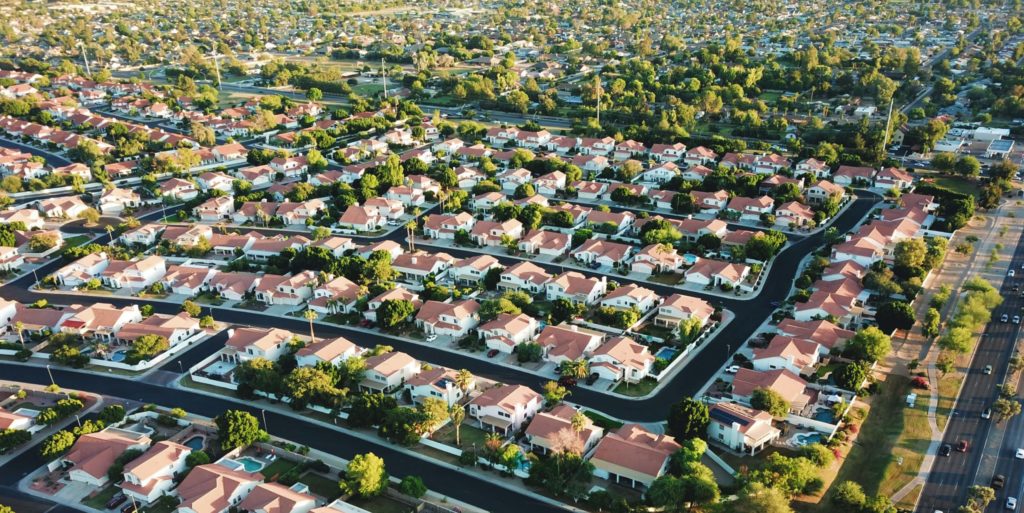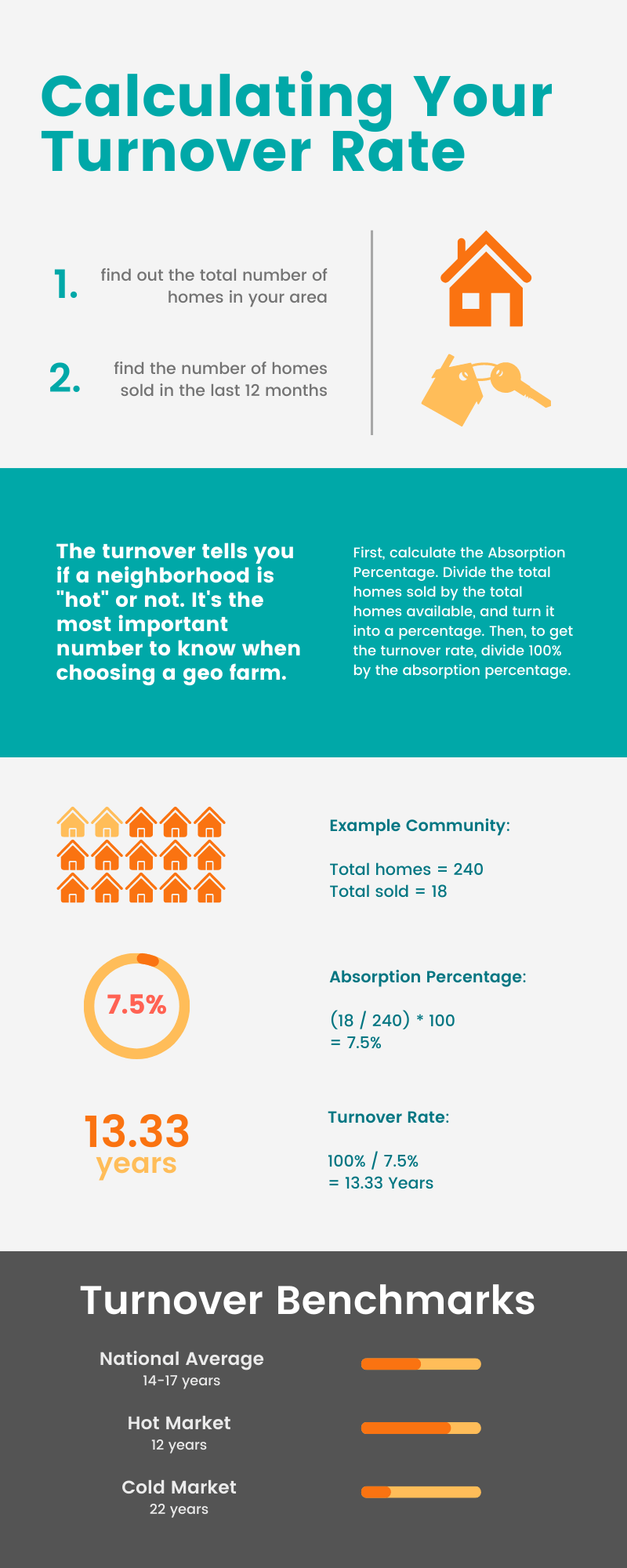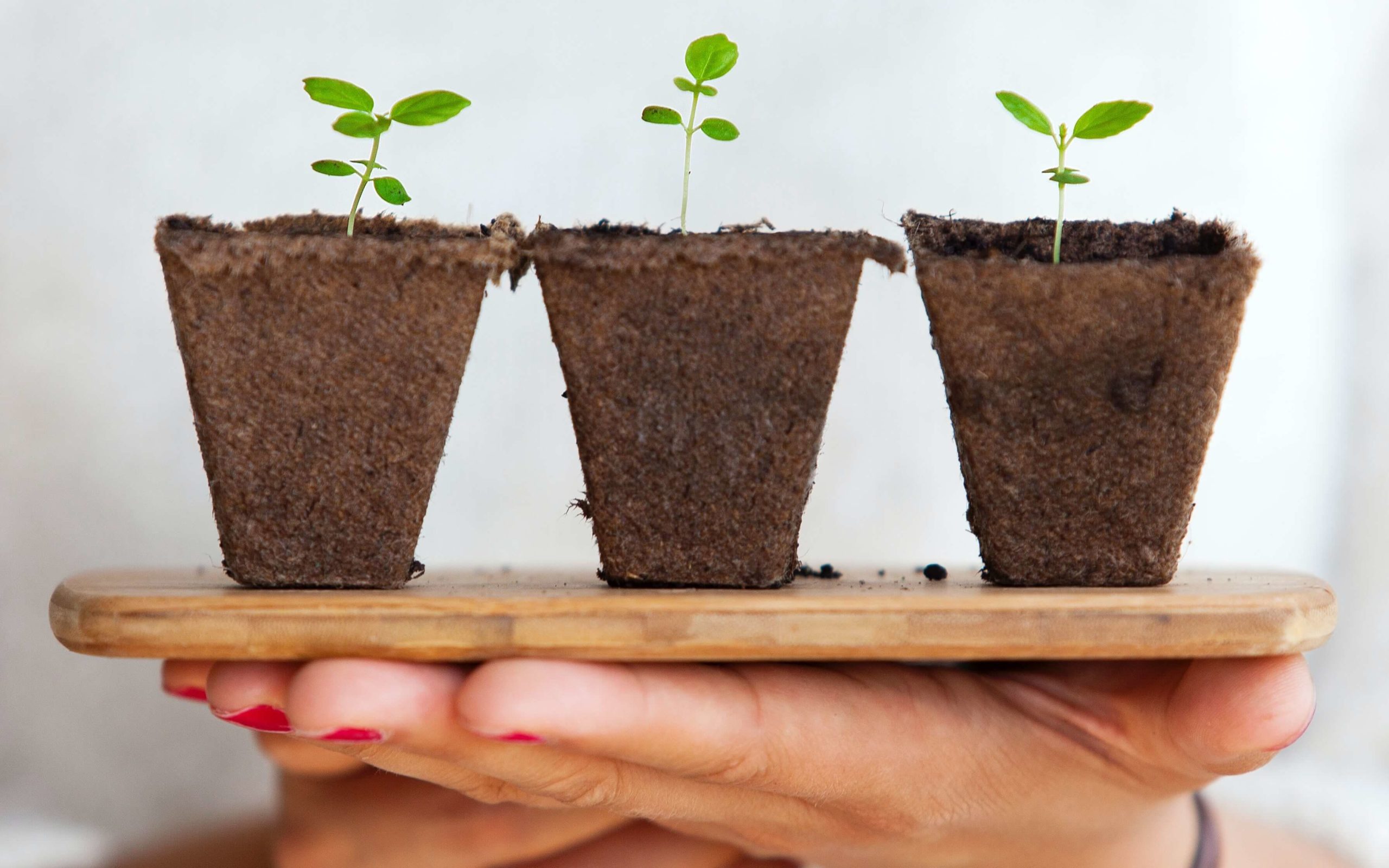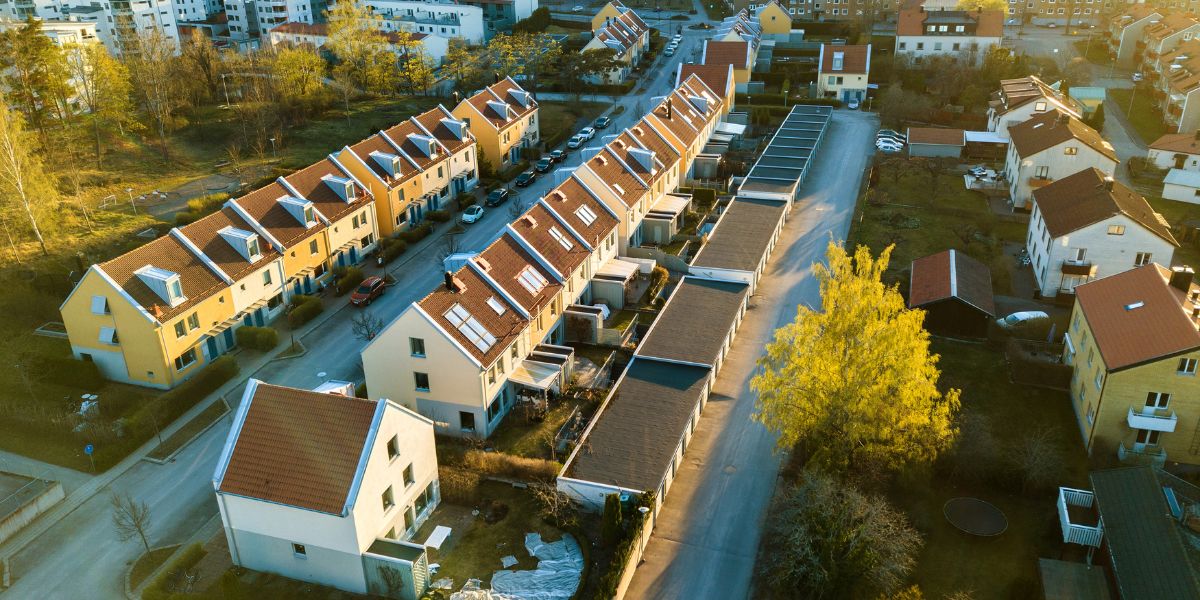Everything you need to know about geo farming in real estate in 2023
Spoiler Alert: the best practices have changed post COVID.
If you want to become the go-to real estate agent in your community, you first need to become a master of geo farming (aka hyperlocal marketing). This is an invaluable skill that differentiates a transactional agent who’s only barely able to ride the tide of a booming market, from a relational agent who succeeds in any climate.
Geo farming, at its core, is about building relationships in a local community. It’s not about spamming a neighborhood with direct mail, facebook ads, billboards, or other forms of localized advertising. Getting it right will help you to establish yourself as the go-to agent in your community. Getting it wrong will cost you.
Keep reading to learn everything you need to know to build a killer geo-farm in 2023.
This article includes
Why geo farming in real estate is so important
What is geo farming in real estate
Geo farming basics: 4 steps to building your farm
Why is geo farming in real estate so important?

A quick history lesson
There was a time, not that long ago, when REALTORS® were celebrated in their local communities. They knew the ins and outs of the neighborhood and offered value far beyond their real estate call of duty. When Butcher Bill needed a new cashier to manage weekend demand, he’d tell his local realtor. When Sally the Stylist was expanding her salon, guess who she’d call to spread the word?
Over the years, the proliferation of the web and social media has reshaped community boundaries. Where once the local agent was the source for community insights, there is now an app for that. Where once the knock on the door was met with a genuine welcome, today, the real estate agent often garners the trust (or lack thereof) of a used-car salesman.
The internet has made it easier for people to find information and to connect with one another. However, by the same token it has also made interactions more impersonal. There are many ways in which the world has changed over the decades. What hasn’t changed, though, is our need for valuable exchange and real human connection.
Let’s put this another way…
It’s not that people don’t want to talk to real estate agents anymore. It’s that to the average homeowner, a cold call from an agent no longer offers the value it once had.
Here’s the thing–and this is as true today as it was thirty years ago: If you can have sincere interactions and deliver real value, people will want to hear from you.
Real Estate is a Community Building Business
At its core, real estate is a community building business. In order to be successful in the long run, you have to treat it accordingly. This means becoming involved in your local community. It means getting to know the people who make it up and understanding what they want and need. It means delivering value, not just when it suits you, but over and over again as an active member. And it means becoming a local leader.
Let’s explore what geo farming is, how it works, and how you should get started.
What is geo farming?
Geo farming in real estate is also known as geographic farming or simply farming. It is a marketing strategy where you target a select community or neighborhood. As with any kind of prospecting, the goal is to increase brand awareness, capture leads, acquire referrals, and ultimately, yield listings.
Typically, this can include everything from mailers and door hangers to newsletters and even gifts. However, the trick with farming is to have a foundation of a relationship first. Then you can amplify that with advertising. If you start advertising without establishing that relationship, you might as well be flushing your money down the toilet! Therefore, you need to have a sound strategy backed by intelligent research in order to succeed. And this blog will give you the blueprint!
Before you begin your real estate geo farm, learn the basics
It’s not complicated, but there are ways to do it right… and then there are other ways. We recommend erring on the side of the tried and true before getting creative and going off script.
4 basic steps to building your geo farm
- Choose your geographic location wisely
- Learn all there is to know about your community
- Determine your marketing budget
- Create value
1. Choosing your real estate geo farming location

Location, location, location… If there’s one lesson we repeat over and over in real estate, it’s the importance of choosing the right location. When it comes to building your geographic farm, this wisdom holds true here as well. A geographic farm in real estate isn’t simply a target for your marketing campaign. It’s a community that you invest in and grow with. So before you commit, weigh the following considerations.
- Do you (actually) want to do business in this area?
This sounds like a basic question. But, we’ve seen agents fail because they do this wrong. They pick an area because it “looks good” or is known to be a “hot area.” In truth, however, they don’t want to sell the types of homes there. Or they simply don’t connect with the type of people who live in that area! This can really cost you, especially in your early years as an agent. Therefore, pick an area that you genuinely want to become the go-to agent in. - How often do people move in that area?
If people don’t move often, then it takes more time and money to generate leads, clients, and referrals…That’s time and money that you might not have. Therefore, pick an area that has a great turnover rate (more on that later). - Is the area dominated by a few agents?
Some rules of thumb: If there are three agents with 66%+ of the market share, it’s going to be hard to break in. The goal is to find an area where no one agent has significant market share. Ideally, you want to rank in the top five with 10% market share. And on average, that takes anywhere from 3-5 years. However, the goal is to pick an area where you can become a dominant agent.
Area of Expertise
Pick one. That’s the punchline.
“But, I can help anyone, everywhere!” While that may be true, it’s just not a winning strategy for real estate. In fact, it’s a major reason why 50% of new agents fail.
We get your hesitation. You don’t want to miss out on deals. When you’re a new agent with bills to pay, this fear can even feel justified. But, it can also cause you to be inefficient and ineffective with your client acquisition strategies. And that can cost you your career.
Picking and honing in on a niche market actually helps you grow your business. It does NOT “pigeonhole you” or slow you down. On the contrary, specializing in a niche will help you make more money, make more money consistently, and make money despite economic/real estate downturns.
For more on how to choose the correct niche for your business, check out this article. But, for the purposes of your geo farming strategy, just trust that you need to pick one.
Turnover Rate and Absorption Percentage
The absorption percentage is the percentage of homes that were sold in a market. For example: if an area has 10,0000 homes, and 500 were sold, the absorption rate would be 5%. Essentially, that means that 5% of homes were “absorbed in a transaction” (aka sold).
The turnover rate is the rate at which every home is estimated to sell within a community. Using the example above, if 5% of the homes were sold in the last 12 months, that means that this market has a 20 year turnover rate. Another way of saying this is that it will take 20 years for every home in that area to sell. Of course, not every home will sell. However, where they don’t, others will sell a few times over. This is an estimate, after all.
Turnover rate benchmarks
The national average turnover rate is typically around 14-17 years. However, in boom times, more people are selling, and the turnover rate can drop to something like 12 years. Conversely, in downturns, less people sell, and it can increase to something like 22 years.
The turnover rate is the most important number an agent needs to know when choosing a geo farming location. This is because it will help you to create a systematic and predictable way of getting new clients. And fortunately, it’s very simple to calculate!
Calculating your absorption percentage and turnover rate
To calculate your turnover rate, you just need two numbers:
- The total number of homes in the area
- The total number of homes that sold in the last 12 months
Once you have these numbers, you can quickly calculate the absorption percentage, and then the turnover rate. Simply divide the homes sold by the total number of homes in the area. Then turn that into a percentage by multiplying by 100. That gets you the Absorption Percentage. Then, to get the turnover rate, simply divide 100% by the absorption percentage.
Here’s an example:
- A community has 240 homes
- 18 were sold in the last 12 months
- Absorption Percentage = 18/240 = .075 x 100 = 7.5%
- Turnover rate = 100% / 7.5% = 13.33 Years

Learn more about turnover and absorption rates.
What to do during Market Shifts
Market shifts are inevitable. They can be caused by economic downturns, a new government, or even a pandemic (hopefully never again!). Regardless, when they occur, it’s smarter to look at the absorption rate over a shorter period of time (e.g. three months), and then annualize it. That would illustrate a clearer picture of the future and better inform your business and marketing decisions.
Let’s take the recession of 2022 as an example.
If you calculated the absorption rate in October 2022, that 12-month period would include the boom of 2021. However, the market saw a decline towards the second quarter, which would not be accurately reflected. Instead, it would be smarter to look at the absorption rate in Q2 2022, and then annualize that data.
Using the example above, the past 12 months may indeed paint a picture of a hot market. 18 out of 240 homes sold, meaning there’s a 7.5% absorption percentage and a 13.33 year turnover! These are all positive indicators for your geo farm. What’s more, this could inspire a false confidence in your current lead generation strategy.
However, toward the end of the year interest rates were going up and the economy entered a recession. If you annualized the trend of the last three months, it would tell a very different story. Out of the 240 available homes, only three were sold in the last 90 days. That means that over the next 12 months, you could expect 12 more homes to sell. And that brings the absorption percentage down to 5% and the turnover up to 20 years. The smart marketing move in this climate would be to do more prospecting, more advertising, and more following up.
Here’s the rub:
When agents fail to look at the changing turnover rate in their market, they don’t adjust their client acquisition strategies. That causes them to get fewer clients, make less money, and potentially fail out of the industry.
Pro Tip: Always factor in the average price of a home when choosing where to grow your real estate geo farm. Some areas with a subpar turnover rate can make up the difference with higher commissions.
2. Getting to know your geo farm

Okay, now that you’ve selected a location for your real estate geo farm, it’s time to prepare the soil for sowing season. That means getting to know your chosen community from the ground up.
Start with some quantitative metrics. You probably already know a bit about the demographic breakdown in this neighborhood, the rates of real estate transactions, etc. Generate a document to keep clean records of it all. Not only will this give you a sense of the health of the market, it will help you identify trends as they emerge. Plus, in the future, if you generate a newsletter or market report, this will work towards building out your content!
Next, gather your qualitative data. These are data that can’t be scraped by accessing a database. Is there a growing community of senior citizens who may need support maintaining their properties over the coming years? Or, are there a lot of young entrepreneurs who want to buy investment properties? The more you know about the people in your community, the easier it is to identify opportunities to offer value.
3. Determine your marketing budget

Over our many years working with real estate agents, if there’s one thing they seem to have in abundance…it’s ideas! Now, having the time, money, and ability to execute on those ideas…that’s sometimes another story. Before you start brainstorming all the creative ways that you can connect with your real estate geo farm, consider your budget.
We’ve written a great piece on how to create a real estate marketing budget, including a downloadable template to get you organized.
However in the meantime, here are some key take-aways about budgeting:
- Your budget must align with your goals. Do you want to grow your GCI or your net profit? If you want to focus on GCI growth, then plan to spend more money and be less profitable. If you want to focus on net profit, then cut expenses and spend as little as possible. But don’t expect your GCI to grow year over year.
- Be conservative and plan for everything. Do not underestimate your expenses and do not overestimate your GCI. Also, plan for all expenses, even parking. If your brain is thinking, “should I include X in my budget?”…the answer is yes.
- If the expense doesn’t directly help you make money, shop around. This includes all expenses like your car, your website, your choice of CRM, etc. Shopping around and negotiating where appropriate can save you thousands in the long run.
- If an expense helps you generate money directly, don’t count it as an expense. There are lead generation solutions out there that offer a guaranteed return on investment. Find them, and spend as much as your cashflow allows for. While those, too, will have diminishing returns after a certain point, it makes sense to maximize those opportunities.
- Reevaluate past expenses. If you invested in something last year that did not add GCI to your business, cut it and try something different next year.
4. Create Value
Aka the best strategies for geo farming in real estate for 2023

There’s a reason why this section is titled “create value” and not “top lead generation strategies.” That’s because regardless of your method, if you want to become the go-to agent in your geographic farm, your duty is first and foremost that of service. That is how you build trust and ensure that your communication with prospects is welcomed.
In the words of marketing guru Seth Godin, “Build trust and earn attention. The entity that gets the most trust will get the most customers.”
Unfortunately, there is no hack or shortcut for convincing people that you mean well. You simply have to do it. Fortunately, we have put together a list of the most effective geo farming methods to help you demonstrate who you are and what you bring to your community. Here are our top methods for geo farming in real estate for 2023.
1. Create video content about your geo farm
Video has been the most effective medium of content consumption since the advent of color TV. What’s more, it’s actually growing in popularity year over year. Consider the following statistics:
- Twitter saw a 95% increase in daily video views over the last 18 months
- With 2.5 billion active monthly users, more than a billion hours of content is watched on YouTube, every single day
- 86% of marketing professionals agree that video content has been an effective method of lead generation for them. That’s up 2% from 2021 and 5% from 2019
- In 2015, 33% of marketing professionals found that video offered them a positive ROI. Today, that number has grown to a whopping 87%!
So what’s been driving this increase in popularity? Beyond the fact that it’s the best way to capture and keep attention, creating videos has become easier with each passing year. As a result, more content is being made than ever before. And not just by professional storytellers, but by real people. That means content that real people trust and want to watch!
Cool, but what does this have to do with geo farming in real estate?
Well, since we know that videos are the most engaging form of content… and these days they’re not that complicated to put together, why not use them as a way of creating value for your community?
Consider interviewing a local owner about their business as a way of getting to know your community. The business owner gets some exposure and free content. The larger community gets to know a local leader. And you get to forge stronger relationships with both!
This is perhaps the best kept secret in marketing today. Creating something of real value for someone else… also shines a spotlight on you.
For tips, tricks, and a comprehensive guide to creating engaging video content, check out this Local Leader® video marketing masterclass.
2. Post local news, events & promotions on social media
People who are part of your geo farm should be following you on social media. However, if your content is largely made up of highlights of your amazing life, interspersed with services that you are selling, you’re not giving people much reason to tune in. It comes down to this: If your page is all about you, only the people who already care about you will care. Conversely, if you use your page to post information that affects your community, you give people a reason to engage.
Consider using your social media to share deals about a local business, for example. You will not only help the shop to spread their message, you also provide their customers with something of value. Plus, in the process, you establish yourself as a leader in your community and secure stronger relationships with everyone involved. It’s a win-win-win. The same applies to local news, events, and yes, those videos featuring local business owners from the idea above!
3. Write a meaningful newsletter to your geo farm
Remember all that data you gathered in step #2? Here’s where it can come in handy. Produce a newsletter that’s engaging, informative and relevant. Consider the following content ideas:
- Include market reports with insights about their neighborhood
- What is the median home price in this neighborhood right now?
- What is the median time on the market?
- How have things changed over the past 12 months?
- Include neighborhood reports for their curiosity
- What are the average incomes in this neighborhood?
- What are the age ranges, education levels, and employment trends?
- What’s the walking score and school rating?
- Highlight trends in home decorating or remodeling
- Chances are, homes in an area have a lot in common; if someone in the area is ready for window upgrades, for example, others might be as well
- Chances are, homes in an area have a lot in common; if someone in the area is ready for window upgrades, for example, others might be as well
- Include local events and neighborhood insights
- Is there a school event that affects the neighborhood?
- Is there a local fundraiser or perhaps a council meeting?
- Are they building a new playground or gym?
- Highlight any major accomplishments by people in the neighborhood
- Highlight a local business (perhaps that local glass company that has helped some neighbors with their window upgrades!)
Ultimately, the more personal your newsletter is, the more likely that people will look forward to reading it. What’s more, if you can establish a sphere of influence, people will start to come to you with content ideas. This means that generating content will take less and less time as you set roots in your geo farm.
4. Give Gifts to people in your geo farm
We’ve all heard of closing gifts. They’re a great way to say thank you and to leave a reminder of a positive experience with you. But, what about gifts for your geo farm?
This is the most expensive of marketing vehicles. But, it’s also one that could leave the most lasting impression. After all, gift giving has remained in style for a reason. Used wisely (and sparingly), gifts can be a great tool for demonstrating that you care.
Example of effective gift giving
Chip Barkel, a Toronto Realtor, illustrates this perfectly in “Becoming a Local Leader®.” Getting to know his geographic farm, he discovered a homeowner who had made a referral to a competing realtor and never so much as received a thank you. The next day, he showed up to her home with a box of imported chocolates to let her know that not all agents are the same.
In another story, he connects with a homeowner who is an avid gardener. Turns out she is a fan of a particular kind of squash (the Hubbard squash), which Chip had never heard of. Then, one day he came upon it at the farmer’s market and bought a pair, one for himself and one for the gardener in his community.
In both cases, Chip was able to build a personal relationship with the homeowners in his geo farm. And in both cases, these homeowners eventually became his clients.
There is no inventory or registry of gift ideas that “always work.” But, good gifts do share traits in common. They’re personal. They make the recipient feel “seen.” And they do not obligate them. So, get out there and get to know the neighbors. Maybe there’s some gardening education in it for you, too.
Interact with your geo farm IRL (“in-real-life”)
No matter your medium, everything you put out to your geographic farm needs to nourish the community in some way. Remember, this is a long-term strategy and it’s first and foremost about building relationships. So, don’t rush to “harvest your crop” or close too soon.
Since every relationship is unique, again, there’s no secret recipe to making this work. That said, the more you’re involved in your local community, the more opportunities you’ll have to forge those unique bonds. Here are some creative ideas to get you out there, beyond knocking on doors and hosting open houses:
- Sponsor or participate in a local fundraiser
- Help someone set up a yard sale to get rid of some old clutter
- Participate in or sponsor a local parade or sports team
- Get involved in a local garden
- Organize a community clean-up effort
- Volunteer at your local church or community center
- Hand-deliver your newsletter or mailers and chat with the neighbors
Conclusion
If there’s going to be just one thing that you take away from this article, we hope it’s this: There’s no substitute for substance. Geo farming in real estate is all about delivering substance to your local community. In our experience, you get back what you put in. So, if you want to become the go-to real estate agent in your neighborhood, become someone who really makes a difference in your community first. Become a Local Leader®.
Parkbench has cracked the code on geo farming in real estate
Would you like to meet more people in your community… without knocking on doors and without the risk of rejection? Parkbench is a framework for generating real estate leads by delivering real value first. They’ve developed a digital platform for local news, deals, and more. Think Groupon meets Yellow Pages, but hyper local. When you sign up, you sponsor your local neighborhood. That means that business owners will now have a space to announce promotions, community organizers to publish about local events, and residents to keep up to date with local news. And as the local real estate agent who sponsored the page, you get to engage with everyone and build relationships. With over 19,000 neighborhoods and counting, Parkbench is the best tool for geographic farming, guaranteed.
Disclaimer: Only one agent can sponsor a single neighborhood on Parkbench. So find out if your community is still available.
Learn More About the Latest in Real Estate Marketing With Local Leader®
Now that you know more about geo farming in real estate, stay in the know by subscribing to our newsletter with Local Leader®. We provide free resources for real estate professionals, including agents, brokers, and support teams.






